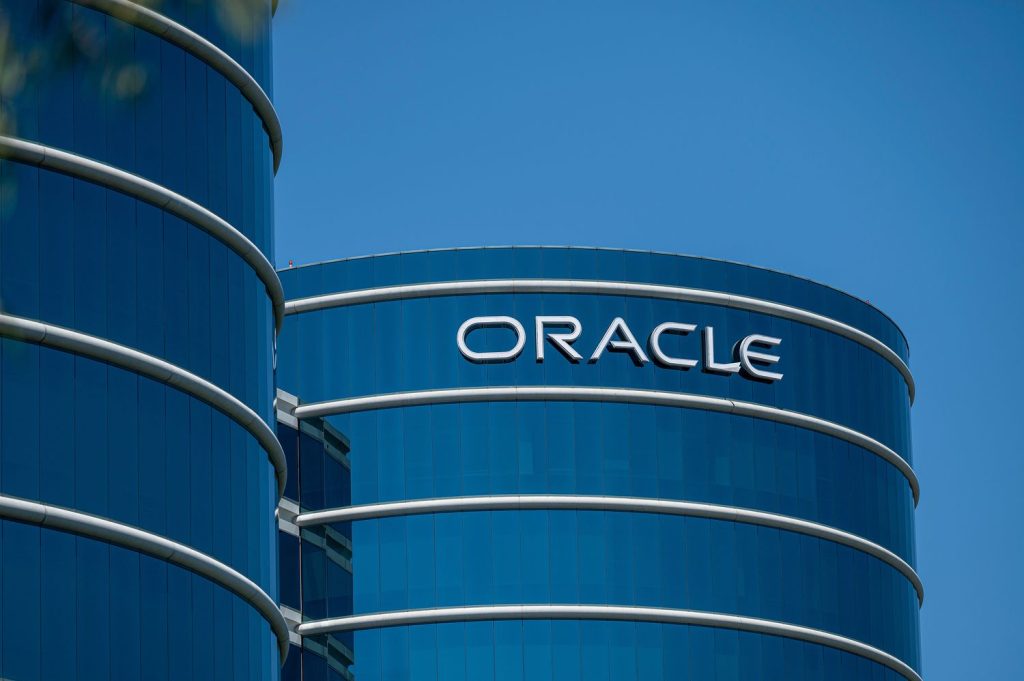Oracle Corp. surged 13% after reporting a spike in bookings attributed to its closely watched cloud computing business, showing progress in its bid to capture more share of the competitive market.
Remaining performance obligation — a measure of Oracle’s sales backlog — was $80 billion at the end of the quarter ended in February. That was significantly ahead of the $59 billion expected by analysts. Chief Executive Officer Safra Catz pointed to this figure, which she said was driven by “large new cloud infrastructure contracts signed in the third quarter,” as evidence of momentum.
The Austin-based company, known for its database software, is focused on expanding its cloud infrastructure business to compete with Amazon.com Inc., Microsoft Corp. and Alphabet Inc.’s Google. That effort has faced headwinds in recent quarters as growth rates slowed. But there were signs of stabilizing in the third quarter, with sales gaining at nearly the same pace as the three months preceding it.
Shares jumped to as high as $130.72 in extended trading. Oracle’s stock had been down about 10% over the past six months through Monday’s close, lagging the iShares software ETF, which gained 16%.
“We expect to continue receiving large contracts reserving cloud infrastructure capacity,” Catz said on a conference call, adding that Oracle is “very rapidly” opening new data centers to meet demand.
Cloud revenue jumped 25% to $5.1 billion in the period that ended in February, the company said, just ahead of Wall Street’s $5.06 billion estimate. Of that, $1.8 billion came from renting out computing power and storage over the internet and $3.3 billion from applications.
The results were “certainly better than feared,” said Jefferies analyst Brent Thill in an interview, noting that other cloud vendors like Amazon and Microsoft have similarly reported strong results recently.
Total sales in the fiscal third quarter increased 7.1% to $13.3 billion, roughly in line with analysts’ estimates. Excluding some items, profit was $1.41 a share, compared with the average estimate of $1.38.
Sales of Fusion software for managing corporate finance increased 18% in the quarter from a year earlier. Revenue from NetSuite, enterprise planning tools aimed at small and midsize companies, was up 21%. Revenue from both businesses gained 21% in the previous period.
After acquiring Cerner, the electronic health records company, Oracle has been focused on modernizing the legacy software business. It finished moving “the majority of Cerner customers” to Oracle cloud infrastructure in the quarter, Chairman Larry Ellison said. Further updates over the coming year, such as a new suite of applications, will transform Cerner and Oracle’s health operations into “a high-growth business for years to come,” he added.
In the current quarter, which ends in May, revenue will be up about 5%, Catz said. Cloud revenue without Cerner will be about 23%, she said. Cerner will return to revenue growth in the fiscal year ending in May 2025, Catz said, adding that it has been a “significant headwind” to revenue growth this year.
Capital expenditures will be as much as $7.5 billion in the current fiscal year, Catz said. As the company builds more data centers to meet demand for cloud computing, that spending will increase to $10 billion in fiscal 2025, she added. That’s above the average analyst estimate of about $8.9 billion.



